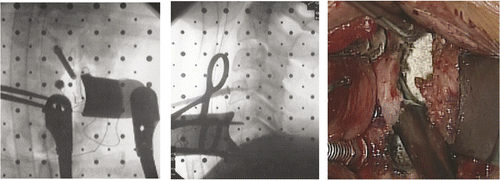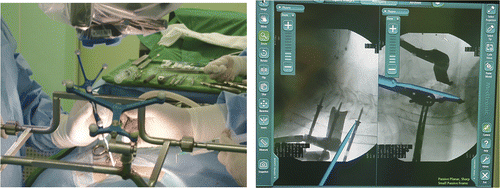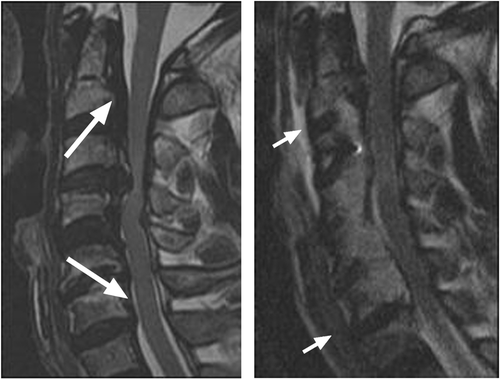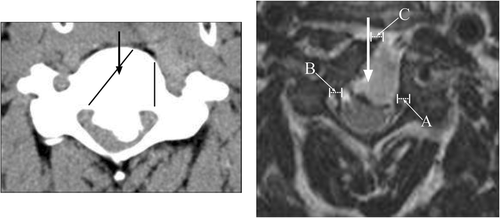Figures & data
Table I. Demographic and clinical data of patients. For mean values, ranges are in parentheses.
Figure 1. The longus colli muscle was retracted by a lateral blade connected to one of the central screws. Left: Anterior-posterior view with C-arm. Center: Lateral view with C-arm. Right: Microscopic view during contralateral-side drilling.

Figure 2. Left: A dynamic navigation frame was attached to the operating table with an external frame. In this configuration, navigation can be implemented while maintaining the microscopic view. Right: IGN is useful in the axial plane and also in the sagittal plane.

Figure 3. Preoperative and postoperative sagittal T2 images of a 62-year-old male with OPLL. Left: The upper and lower arrows indicate the direction of drilling. Right: The anterior portion of the upper and lower end segments was preserved.

Figure 4. Left: The arrow indicates the center of the vertebral body. The two lines represent the ideal trapezoid bony resection. Right: A is the remaining posterior body in millimeters from the ipsilateral medial margin of the pedicle; B is the same portion from the opposite side; and C is the remaining body from the center.

Table II. Completeness of multilevel oblique corpectomy (CMOC): mean values with ranges in parentheses (all measurements are in mm).
Table III. Dispersion of treated levels.